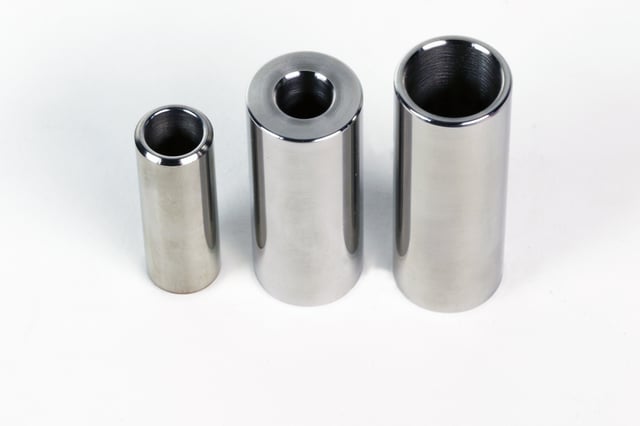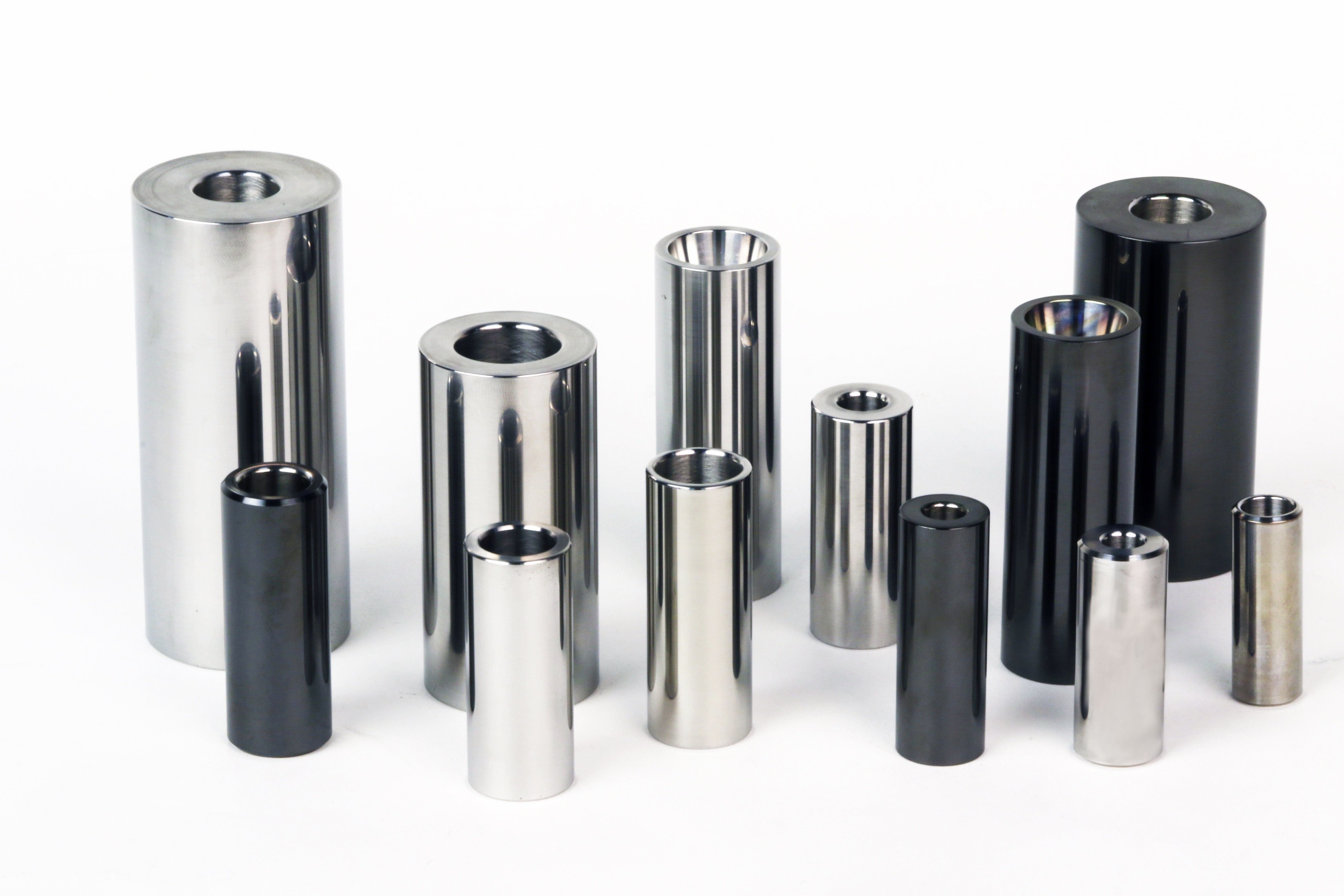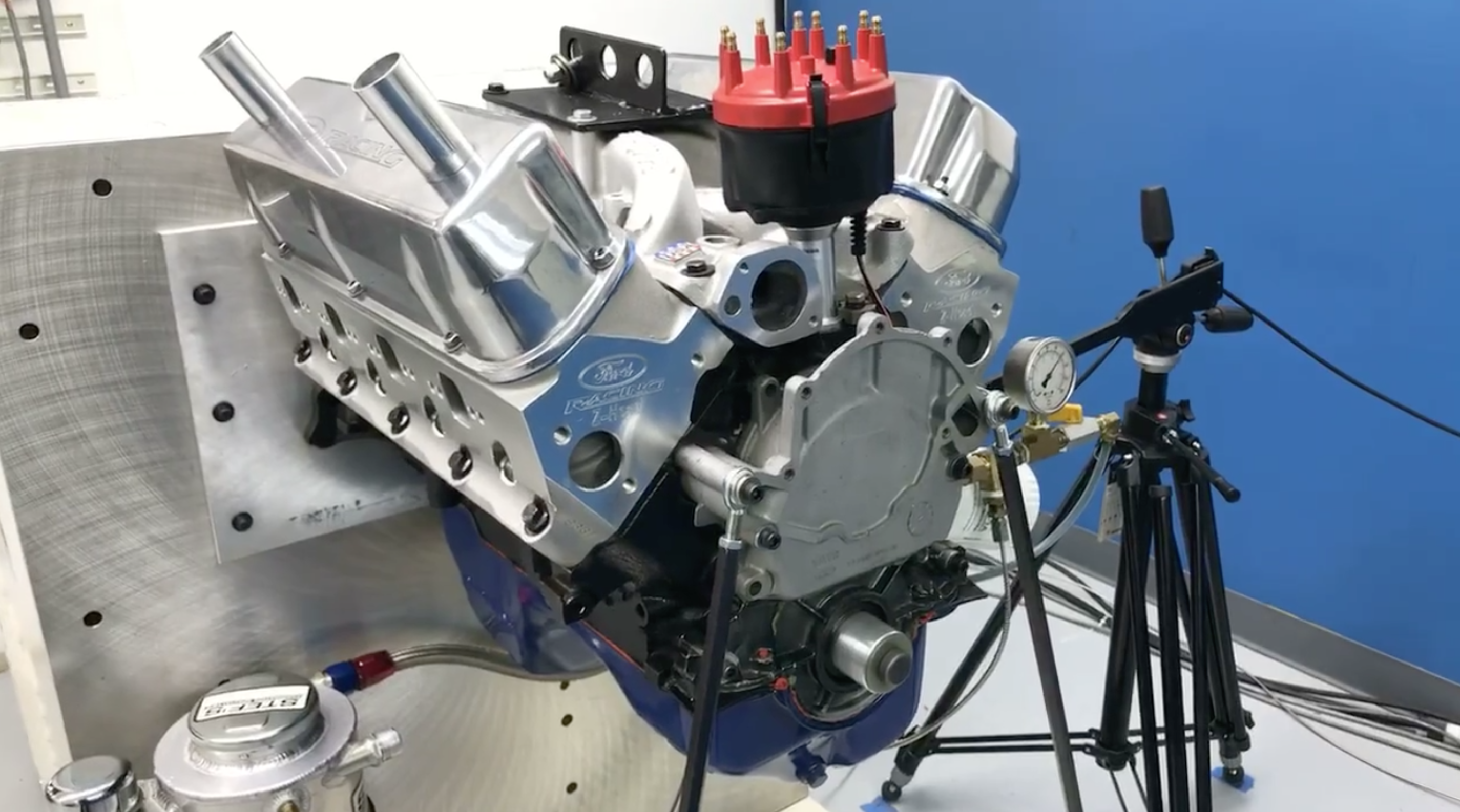The wrist pin has an incredibly vital job, shuttling over 11,000 pounds of force up and down the bore. Choosing the right pin for the application is critical.
You would be hard-pressed to find a component in a performance or race engine that is less glamorous than the modest wrist pin. But consider how much abuse this component must withstand. The two greatest loads in the reciprocating portion of any internal combustion engine can be found focused on the wrist pin. Worse yet, the forces apply load in opposite directions. Compressive loads like cylinder pressure push on the piston straight through the wrist pin attempting to collapse the connecting rod while high rpm creates nearly as destructive forces in the opposite direction.

When the crank yanks on the connecting rod and wrist pin and does its version of the medieval rack machine, it creates what is called a tensile force. While the human body doesn’t deal well with being pulled apart, engines are a bit more tolerant. A small-block Chevy with a 600-gram piston, wrist pin, and connecting rod combination at 6,000 rpm produces a tensile load of over 11,000 pounds – that’s like hanging a pair of fully-dressed Suburbans off that pin – at 100 times a second.
So this might seem a good time to investigate why a little insurance in the form of a quality wrist pin is more than just a good idea. A discussion of what makes a strong wrist pin must first address the issue of metallurgy.
There are literally hundreds of steel alloys but only a few that are worthy of use in a race engine. All steels can be evaluated in a multitude of ways, but the critical numbers are their ultimate tensile and yield strengths. Ultimate tensile strength is how much load the alloy will withstand, in tension–think tug-of-war rope–before it fractures or breaks.
But perhaps a more important number is the steel’s yield strength. This is the amount of load it will withstand and not permanently deform. Even steel has a memory that will allow it to be loaded to a given point and return to its original shape with no permanent deformation. Apply the load beyond this yield limit, however, and the steel will deform much like a chunk of caramel candy.

Material Types
Most stock production engines use a 1018 cold rolled steel wrist pin alloy, which works fine for grandmother’s excursions to the bingo parlor. But for a performance or racing engine that is destined for high rpm or a shot of nitrous, Trend offers several high-strength alternatives.
The G-series wrist pins are created using a far stronger 4130 steel that offers dramatic tensile and yield strength advantages. According to Trend Performance manager Steve Rhodey, “the first two requirements for choosing a wrist pin should be the material and then second – the wall thickness.”
Wall thickness is a double-edged decision because while a thicker pin is obviously stronger, it’s also heavier. This is the classic strength versus weight dilemma and each application will be slightly different. This is where Trend technicians can help by offering suggestions based on broad experience. While weight adds strength, it also is subjected to greater high rpm tensile loads. A lighter pin might be a better choice for a short-stroke high rpm engine where a thicker-wall pin might be advantageous with higher cylinder pressure loads or where endurance is a high priority.
Tensile and Yield Strengths of Alloy Steel
|
Material |
Tensile |
Yield |
Rockwell |
|
1018 |
63,800 |
53,700 |
Rb 71 |
|
4130 |
97,000 |
63,000 |
Rc 60 |
|
4340 |
185,000 |
125,000 |
Rc 35 |
|
H 13 |
289,000 |
239,000 |
Rc 54 |
|
C300 |
320,000 |
308,000 |
Rc 55 |
All ratings are in psi. These are representative numbers and will change with based on Rockwell hardness ratings.
As an example, for a small-block Chevy 0.927-inch diameter G-Series pin with a 2.500-inch width, Trend offers three different wall thicknesses of 0.125, 0.155, and 0.185-inch. Their difference in weight is significant ranging from 100, to 120, or 137 grams. That’s more than a 30-percent swing in weight, offering a wide variety of application choices.
Power Adder Wrist Pins
If a power adder combined with higher specific output is on your agenda Trend offers a premium alternative to the H-Series that begins life using a much stronger H-13 Tool steel alloy. This choice may be driven more by a need for durability. Rhodey says “The H-13 series wrist pin is considered an upgraded material choice for several reasons. It’s all around a better choice, with through-hardened tool steel compared to case-hardened chromoly. The H-13 pins are also ID honed for stress relieving, hard turned ends and chamfers can be added if needed.”

With a Rc 54 Rockwell hardness rating, this pin has the strength to take the abuse of 11,500-plus rpm NHRA Pro Stock engines. H-13 alloy is an ideal choice because it can more readily accept a diamond-like coating (DLC) compared to a 9130 steel alloy. H13 tempers at 1,000 degrees F compared to 9130 which tempers at a much lower 300 degrees F. Since Trend’s DLC coating requires 400 degrees F to apply, this means the DLC application process would create unwanted structural changes to a 9130 pin.
Diamond Like Coatings
A DLC coating is an outstanding addition to highly-stressed wrist pins because of its incredible adhesion and strength under load. The coating creates a series of interlocking platelets which adhere to the base metal yet offer a distinct increase in both durability and hardness. The DLC’s smoother surface compared to the base metal also improves lubricity, making it an outstanding surface treatment for wrist pins in high output applications.

There are several telltale signs that a current wrist pin may be excessively stressed, including black streaks in the pin boss or signs of wrist pin bushing distress. While these could be indications of inadequate lubrication, they could also be indices to deflection where the engine is nearing the end of a pin’s ability to withstand the load.
Wrist Pin Finishing
This is where Trend’s optional Super Finisher process can offer additional protection. On a near-microscopic level, the surface of any machined component can be represented as a cross-section of peaks and valleys. While the valleys retain oil, it is the peaks that cause metal transfer when heavily loaded.

Rhohdey explains, “Supfina is German company that created the technology we call Super Finishing. It is a machine that carries several wrist pins in a “through-feed” style process across 2 rolls approximately 40 inches long, utilizing a series of stones attached to a fixture designed to apply a given amount of pressure to the pins rolling through the machine. It focuses on knocking off the microscopic peaks therefore affecting several, measurable values of the wrist pin.”
A superior finish lowers the microscopic metal peaks from the surface, the average finish – called Ra – is much smoother, creating a significant increase in surface area while reducing the chance of micro-galling or metal transfer between the wrist pin and the piston or rod bushing. All of these are positive aspects especially given the extreme loads that high output engines apply to the pins.

Trend’s 4130 pins offer an outstanding finish of less than 2.5 Ra with a concentricity value that measures at 60 millionths of an inch – that’s 0.000060-inch and the numbers get better from there. H-13 pins offer an Ra of less than 1 and a concentricity value of 0.000040-inch. The top of the line TP-1 pins will measure inside of 0.000020-inch concentricity.
When Top Fuel teams began abusing Trend’s previous top-of-the-line pieces, Trend responded with its current king pin – the TP-1. This also called for a through-hardening process to ensure strength and toughness, creating a Rockwell of Rc60. Trend’s proprietary TP-1 material offers the compressive strength and desirable surface qualities of M2 without surrendering any of the toughness necessary to withstand the incredible cylinder pressures of a Top Fuel engine making well in excess of 1,300 hp per cylinder.
Not surprisingly, Trend has a wrist pin for every performance application from a mild street engine to colossal Top Fuel engines. This means there is the right wrist pin for any application without having to resort to expensive, and often heavy, overkill. We’ll save the howitzer parts for the Top Fuel guys.







